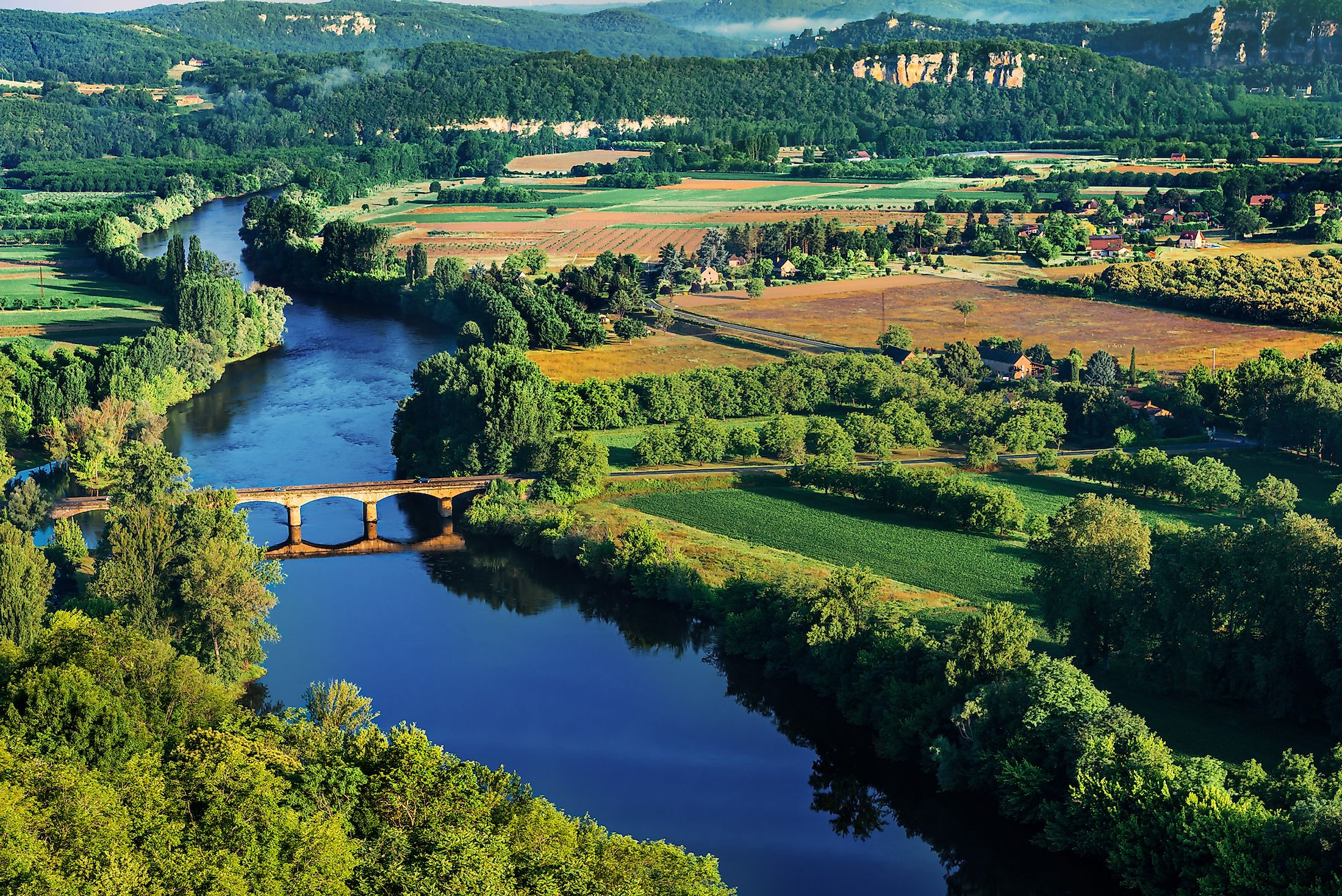
Dordogne River
Referred to as “La Dordogne” in French, the Dordogne River is a 300.2 miles-long river that flows in the south-central and southwestern parts of France. The name “Dordogne” has been derived from the ancient pre-Celtic term “Duranius,” which means water. The Dordogne River is one of the few rivers in the world that exhibits the ‘tidal bore’ phenomenon. On July 11, 2012, UNESCO designated Dordogne and its watershed as a “Biosphere Reserve” “Biosphere Reserve” for its exceptional setting and natural heritage.
Geography Of The Dordogne River
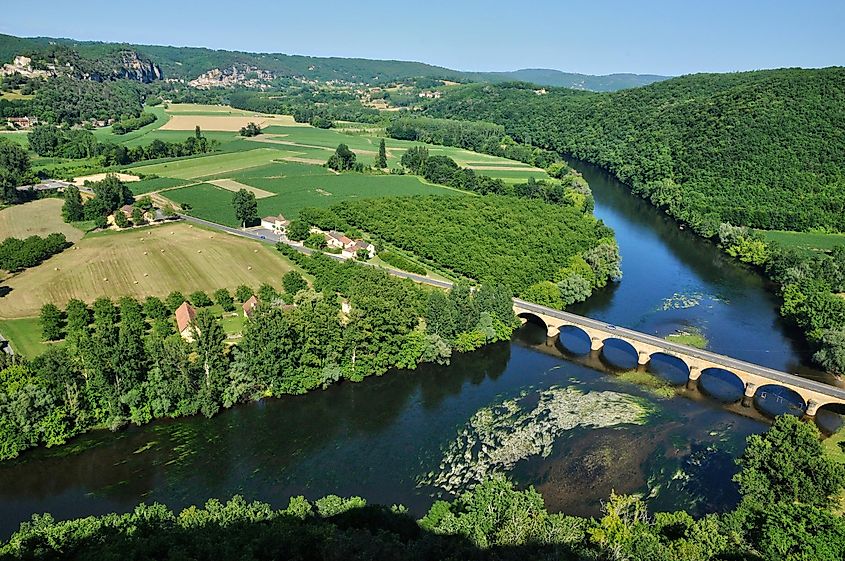
The Dordogne River originates from the verdant slopes of Puy de Sancy – the highest mountain in the Massif Central at an elevation of 6,184 ft above sea level. Here, two small streams named Dore and Dogne flow down the steep hillsides and merge to form the mighty Dordogne River just above the commune of Le Mont-Dore in central France. The river then flows westwards for about 293 miles through the former Limousin and Périgord regions (currently part of the new Nouvelle-Aquitaine administrative region) of southwest-central France. The Dordogne River joins the Garonne River and forms the navigable Gironde Estuary at Bec d’ Ambès, immediately north of the port city of Bordeaux.
Course Of The Dordogne River
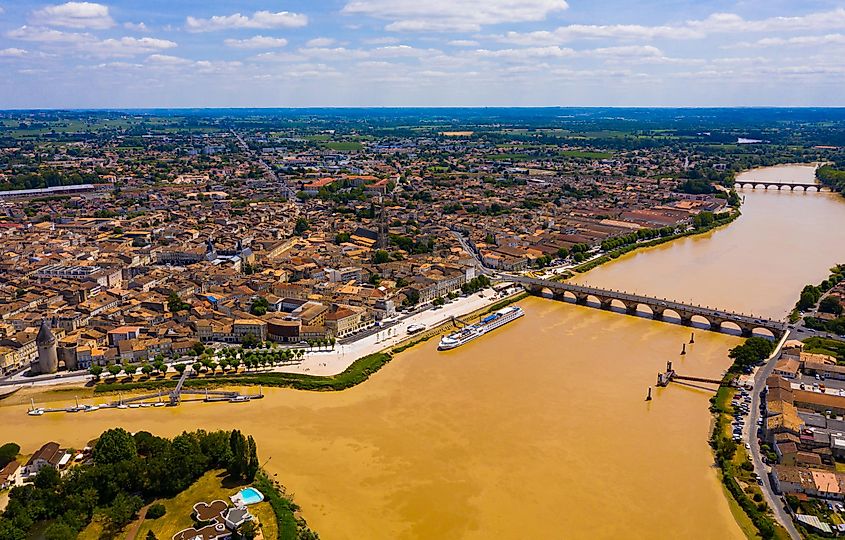
Some of the French départments and the towns in those departments through which the Dordogne River flows are as follows: the towns of Le Mont-Dore and La Bourboule in the Puy-de-Dôme department; the towns of Beaulieu-sur-Dordogne, Argentat, and Bort-les-Orgues in the Correze department; the towns of Souillac, Lacave, Creysse, Martel, Carennac, Tauriac, Pinsac, Meyronne, Montvalent, Floirac, Gintrac, and Prudhomat in the Lot department; the towns of Beynac-et-Cazenac, Saint-Cyprien, Sarlat, and Bergerac in the Dordogne department; and the towns of Libourne, and Sainte-Foy-la-Grande in the Gironde department.
The right tributaries of the Dordogne River include Chavanon, Diege, Triouzoune, Luzege, Doustre, Sourdoire, Vezere, Caudeau, Lidoire, and Isle, while the left tributaries are Rhue, Sumene, Auze, Maronne, Cere, Bave, Ouysse, Ceou, and Couze.
Formed by the meeting of the Dore and Dogne Rivers on the slopes of Puy de Sancy, the Dordogne River then flows through the spa resorts of Le Mont-Dore and La Bourboule in the Puy-de-Dôme department. The upper valley of Dordogne features an amazing series of deep wooded gorges. After flowing through the Aveze Gorges, the river forms an 11-mile-long lake above the Bort hydroelectric dam. Past Bort, the Dordogne River is dammed about four times as it flows through the Dordogne gorges to reach the beautiful riverside town of Argentat in the Correze department, just below which many tributaries join it. Fertile farmlands, walnut orchards, and green, well-watered pastures line the river’s journey between Argentat and Beaulieu-sur-Dordogne.
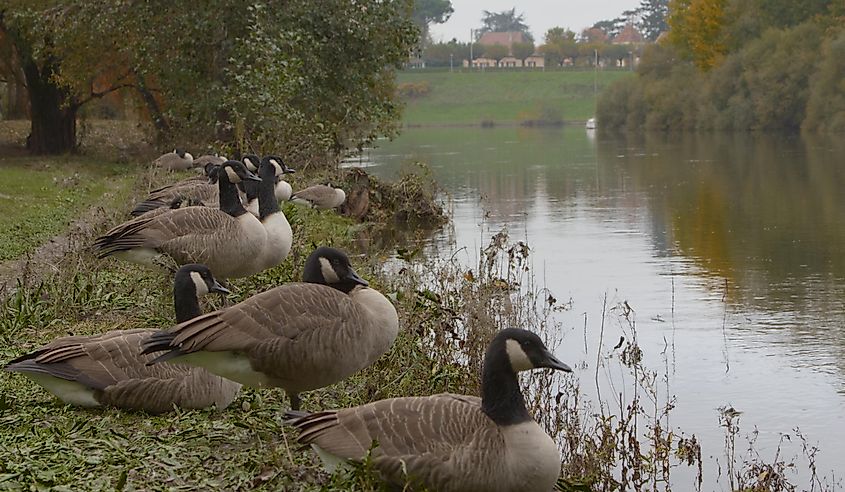
The Dordogne River often splits into many channels forming verdant islands. As the river continues its journey, limestone cliffs honeycombed with painted caves start appearing, alternating with lush green landscapes and medieval castles that are placed high above or carved into the cliffs. The stretch of the river between Saint-Sozy and Souillac is lined by three elegant chateaux: Lanzac, La Treyne, and Belcastel. Here, several beaches with their serene waters and vertiginous cliffs attract tourists for relaxing and picnicking.
In Souillac, the river wind around s-shaped loops, after which it flows past medieval fortresses and spectacular quayside villages filled with famed cafes and restaurants. After passing by the town of Souillac in the Lot department, the river flows through the Dordogne department, where the Vezere River joins it. The Dordogne River then enters the Gironde department, where the Isle River joins it at the town of Libourne before it flows northwestwards and finally meets the Garonne River at the Gironde Estuary before entering the Atlantic Ocean near Bordeaux.
Historical Importance Of The Dordogne River Valley
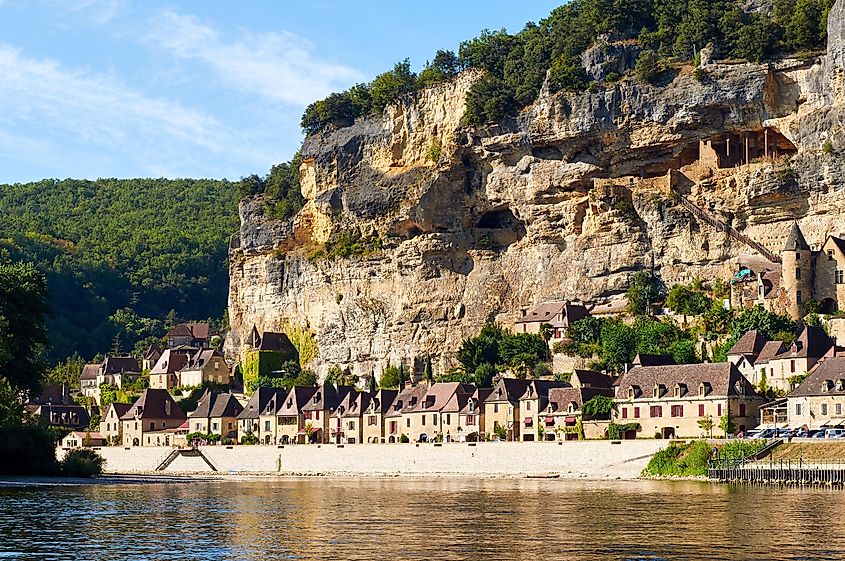
During the Early Middle Ages, the villages placed between Limeuil and Souillac along the Dordogne River Valley prospered greatly as all economic activities were centered on the Dordogne River. During the Hundred Years War, strategic positions in the river valley were coveted by both the French and English. The villages and castles located along the river were heavily affected by the conflicts and changed hands several times between France and England. The French victory at Castillon-la-Bataille ended the Hundred Years War and began an era of prosperity for the region.
From the Middle Ages to the end of the 18th century, the harbors of small towns like Souillac, Limeuil, and La Roque-Gageac were always busy with activities. Here, small barges unloaded their loads, and the goods were then stored here before being transferred to other barges for transportation to different areas. However, some other conflicts, like the Peasant Revolt of the Croquants and the Wars of Religion, temporarily halted this era of prosperity. Due to river trading, the villages and towns situated along the Dordogne River Valley flourished again in the 19th century. The establishment of a railway line between Aurillac and Bordeaux led to a decline in river trading activities on the Dordogne River in the second half of the 19th century. At present, the Dordogne River Valley is a thriving tourist destination attracting thousands of visitors yearly.
Recreational Activities In Dordogne River
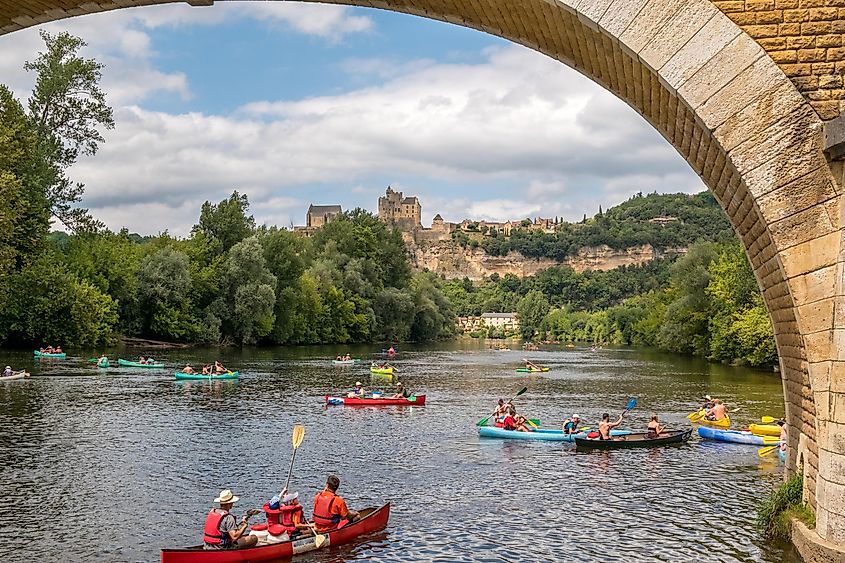
Besides the usual recreational activities like golf and tennis that are offered in other French areas, the Dordogne River offers plenty of water-based recreational activities for both locals as well as tourists. Some of these recreational activities include boating in a gabare, fishing, canoeing, kayaking, rafting, swimming, sailing, motorboating, water skiing, sculling, and rowing. In addition, cycling, hot air balloon rides, climbing, horse riding, and hiking are also offered along the shores of the river. It is these recreational activities in the Dordogne River area that attract hordes of tourists making the Dordogne department one of the most well-known vacation destinations in France.
The Dordogne River Valley is swarmed with tourists from June to September, and being one of Europe’s cleanest rivers, the river has comparatively warmer waters, especially during July and August. Home to many fish species like pike, trout, zander, salmon, and shad, the Dordogne River is one of France’s most well-known rivers for angling and the last refuge of all major diadromous fish in Western Europe. Since the Dordogne River is navigable only for the last 112 miles of its course, the commercial traffic here is comparatively lighter, which makes it an ideal place to practice water sports.
It is to be noted that initially, the Dordogne River served as the direct and safest way of transporting goods and connecting populations that lived in the higher towns of Auvergne and Limousin with the lower towns of Bergerac and Bordeaux. The 18th and 19th centuries witnessed the use of traditional flat-bottomed boats called ‘gabares’ in the Dordogne River for trading purposes. At present, tourists can embark on the replicas of these boats and enjoy an hour-long cruise to admire the fairytale-like countryside along the Dordogne River.
The region through which the Dordogne River flows is an assemblage of spectacular natural views, picturesque ancient towns and historic villages, vineyards, and gastronomic cafes and restaurants. The Dordogne Valley’s lifestyle and culture not only attract the citizens of France but also tourists from all over the world, especially from countries like Britain and Germany.











